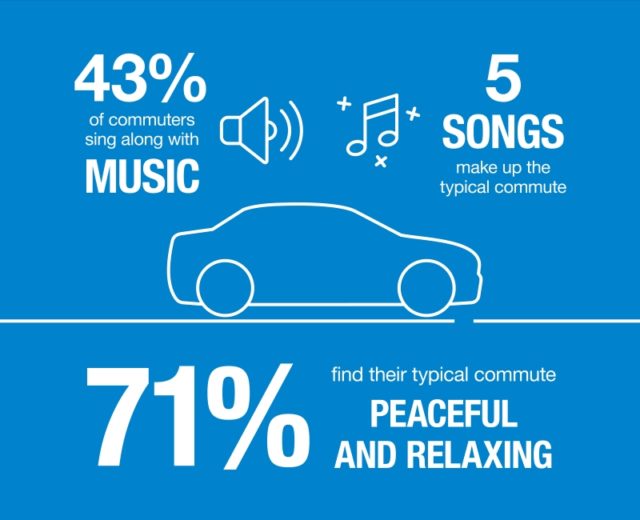
According to a new study from Valvoline, traffic is making us late to work an average of 77 days a year! Nathan Rousseau Smith has the results.
Three-hour accident delays, flooded streets, transmissions falling out on bridges — Americans who commute by car know all too well the pitfalls of getting to and from work.
Americans who commute to and from work end up late, due to traffic or too many stops, 77 work days a year on average, according to new research.

Given how much time they spend in their cars, it should come as no surprise that a new study of 2,000 Americans who drive to work has uncovered that 68 percent of Americans said their whole day could be ruined by a bad commute.
If all the other cars weren’t indication enough — traffic affects a majority of American workers. In fact, less than one in 10 Americans say they don’t encounter any traffic on their typical daily commute.
In total, about one fourth of the average commute is spent in traffic.
The new survey, conducted by OnePoll on behalf of Valvoline.com, found that while a stressful commute can ruin a day, 71 percent of Americans find their commute peaceful and relaxing.
Sixty-three percent of Americans said that commuting time was a major part of their job decision, and for many, work starts in the car on the way to the office. About one third of commuters use their drive to visualize their work day and make to-do lists in their head.
Twenty-eight percent of commuters make phone calls on their drive, and more than one in 10 improve themselves in other ways, like learning a language using a tape.
That said, commutes aren’t all about improvement, or prepping for the work day.
Half of Americans have had to pull over on their commute due to car trouble, and 52 percent have experienced a commuting nightmare.
The most common nightmares? Thirty-eight percent have dealt with a flat tire, 25 percent have had an engine overheat and 22 percent reported dealing with wiper malfunctions.
“Here at Valvoline, we celebrate these road warriors and are committed to helping maintain the life of their engine for years to come,” said Thom Smith, the VP of Lubricant Technology at Valvoline. “That’s why we’re constantly innovating our oils, greases and lubricants, and our service offerings through Valvoline’s Instant Oil Change℠ service centers and other shops, dealerships and garages across the country. We have an oil for practically every engine on the road, all of which exceed industry standards to provide the ultimate protection against wear and aging.”
Half of American commuters reported having intentionally taken a longer way on their commute to have more time to themselves before work.
In case you thought you were the only one — roughly half (43 percent) of commuters sing along with music. The average commute includes about five songs.
Or, perhaps that intentional delay has less to do with practicing matching pitch and more to do with on-the-fly budgeting. The average commute costs Americans about $83 a week ($8.40 in tolls every day and $41 in gas each week).
“Commuting falls into a category car makers call severe driving,” said Smith. “Most drivers don’t realize that severe driving isn’t about driving style but rather the types of trips they’re making. Heavy stop-and-go traffic, short trips, frequent idling and sustained highway travel in cold or hot temperatures can result in more wear and tear on an engine. It’s important to keep up regularly scheduled maintenance and use proper, quality products for your vehicle to help prevent costly and inconvenient breakdowns.”
Less than half of Americans polled (46 percent) knew that stop-and-go driving is a form of severe driving. Just one in five understood that short-distance commutes of less than five miles are a form of severe driving.
Smith continued, providing a guide to severe driving for commuters:
A good way to figure out if your driving conditions are normal is to compare them to what you original equipment manufacturer’s (OEM) guidelines describe as severe. And you might be surprised at what severe driving can include:
- Frequent idling for long periods of time
- Stop-and-go driving in heavy traffic
- Long-distance trips at speeds of 50mph or less
- Regular trips along steep hills or mountains
- Any trips along dusty, muddy, salted, sanded, or gravel roads
- Any trips that involve towing a trailer or a camper
- Any trips that involve transporting items via roof rack or car-top carrier
“Whether your driving conditions are normal or severe, maintain your vehicle accordingly. Being proactive about maintenance can increase the reliability of your vehicle, reduce the long-term costs of operating it and boost resale value,” said Smith. “So, break out the owner’s manual (or consult your mechanic) and protect what’s under your hood to avoid commuting nightmares.”THE FIVE
MOST COMMON COMMUTE NIGHTMARES
- Flat tire 38 percent
- Engine overheating 25 percent
- Wiper malfunction 22 percent
- Running out of gas 21 percent
- Transmission issues 19 percent
CALCULATIONS:
The 152 hours, or 19 eight-hour work days per year figure was arrived at by multiplying the daily commute (35 minutes) by a five-day work week and a 52-week year.
The 77 days late to work due to traffic figure was determined by multiplying the average times per week traffic/too many stops cause respondents to be late to work (1.48) by a 52-week year.












